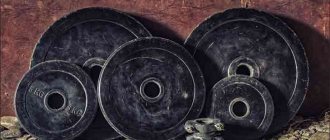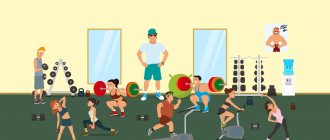6488
Pathological bite – causes significant aesthetic discomfort to its owners and harms the health of the entire dental system.
If the bite is formed incorrectly, an increased load falls on some of the teeth when chewing food, while others are inactive.
This has a detrimental effect on the health of both: some suffer from increased stress, which accelerates the process of their destruction, while others begin to move and take on an even more abnormal position.
There is no need to despair; the science of orthodontics is ready to help in this case with the help of rubber bands for braces. She has been successfully developing a beautiful bite for many years, without any age restrictions.
Why they are used, why and how much to wear, how to put them on correctly and many other important aspects of rubber bands for braces you will learn from this article.
Why are rubber bands placed on braces?
After installing braces, orthodontists resort to various additional devices aimed at improving treatment results. These include special orthodontic traction bands or elastic bands. They are made from hypoallergenic material with high strength and elasticity.
On a note!
Essentially, these are rings of different diameters that are installed on separate areas of braces and used as dental traction.
In orthodontics, there are several types of rubber bands for braces, each of which has its own functions. Together, they help speed up the process of correcting existing anomalies of the dentofacial apparatus by performing the following tasks:
- enhancing the therapeutic effect on the dentition;
- additional load on problem areas;
- guarantee of reliable fixation of the arch to the braces;
- reducing the time required to correct incorrect teeth position.
Elastic rings or rubber bands help the orthodontist have complete control over the bite alignment process.
How to use
There is also woven braid, which is highly durable and rigid. It is made from the same fibers as the others, but using a different weaving method. The loops in it are not noticeable, unlike knitted elastic. It is completely smooth.
Children's sundress
It is used mainly for sewing warm clothes (tracksuits, travel equipment, workwear). It can withstand severe frosts and heat, and can easily withstand a large number of washes.
Very often, elastic bands are used to decorate evening or cocktail dresses. Basically, they are sewn to the bottom of the product, thereby giving it openwork and elegance.
You can decorate children's items such as bodysuits or sundresses with openwork ribbon. You can even sew it onto various accessories, such as handbags or cosmetic bags. The main thing here is to use all your imagination.
Such tapes can be used not only for working with clothes, but also for needlework. Below is an option for edging an oven mitt.
Jacquard ribbon
Fold the elastic in half lengthwise so that one side is slightly larger than the other. Can be bent using a ruler. She bends quite hard. Therefore, you need to press hard on it.
Place the potholder on the work surface. Now you need to place a potholder in the curved elastic band.
Note! The larger side overlaps the inside, and the smaller side overlaps the outside.
Now you need to secure everything tightly with pins. Next you need to start the process of basting the elastic. When sewing, leave 1 mm. The oven mitt is ready.
Very often, openwork ribbons are used when making crafts using the patchwork technique.
When purchasing tape, you need to pay attention to the manufacturer. You cannot choose the cheapest materials, as after several washes it may lose its elasticity. It is better to buy such materials in a sewing accessories store.
You may be interested in what fabrics are used for sewing swimsuits
Types of rubber bands
During the treatment process, the specialist can use different types of elastics, each of which has its own functional significance.
Elastic traction
We are talking about rings that are put on braces installed on both the upper and lower teeth. During fixation, the doctor ensures that the tension remains at an optimal level and is not too weak or too strong.
On a note!
These are the only elastics for braces that the patient can remove or put on independently, without the participation of a specialist.
The intermaxillary traction created is indicated for correcting malocclusion and uneven teeth at the end of the course of treatment. Elastic cords from Ormco, 3M Unitec and other manufacturers are popular.
Ligature rubber bands
These are small-diameter rings that are installed on each bracket to combine the plates with the arch into a single structure. They are used in ligature systems and are offered in various colors.
Multi-colored orthodontic rubber bands make the process of correcting uneven teeth more interesting for children and teenagers. Only a specialist fixes and removes ligature rings. Common brands of quality products:
- G&H Orthodontics;
- American Orthodontics;
- 3M Unitek.
Chain rings
Such rings are connected alternately, forming a kind of monochain. Rubber bands of this type are used to tighten teeth, that is, to eliminate wide interdental spaces.
A doctor must put chain rings on braces. The specialist fixes each rod in problem areas, and then connects them into a single chain using additional devices. Popular manufacturers:
- Ormco;
- Ortho Technology;
- 3M Unitec.
What to use stationery erasers for, besides wrapping money
Wine glasses in the dishwasher
To be sure that your glasses will be safe and sound while washing in the dishwasher, it is best to secure them to the rack with a few rubber bands.
Slippery hangers
If the straps of your dress constantly slip off the hanger, then wrap several layers of elastic around its edges.
Tight jar lids
It will be much easier to open the lid on any jar if you wrap a rubber band around the edges.
Slippery cutting board
To prevent the cutting board from sliding on the table, you need to stretch one rubber band along its edges.
Packing things
Roll the clothes into tight rolls and secure them with a rubber band. This will allow you to pack more compactly and your items won't look too wrinkled.
Old screw
If you need to unscrew an old screw with broken slots on the head, then use a rubber gasket for this.
Locking the lock tongue
Sometimes it is necessary to block the operation of the lock, for example, if it is faulty or you are afraid that children in the room may lock themselves. In this case, pull a rubber band over the handles, which will fix the tongue in one position.
Liquid measure
Everyone should know their limits! And multi-colored rubber bands will help you follow it.
Fixing tea bags
At the moment when you want to switch from strong drinks to hot ones, you also cannot do without a rubber band. With its help, you can easily secure the thread of the tea bag so that you don’t have to fish it out from the bottom of the cup.
French manicure
Use a rubber band to achieve the perfect French manicure.
Removing excess paint from a brush
The less excess paint left on your brush, the fewer drops there will be on your hands, clothes and surrounding objects. Therefore, stretch an elastic band of a suitable size across the open can and use it to remove paint from the brush.
Transporting the pan
If you need to move a pan of food from point A to point B so that the contents remain safe and sound, then secure the lid of the pan with a few rubber bands.
Marking of wires and connectors
To never confuse what goes where and which end, you can mark the wires using rubber bands of different colors.
Turning pages
Never slobber on your finger when you need to turn the page! An elastic band wrapped around your finger easily solves this problem.
Slippery nail polish caps
Nail polish bottle designers seem to be in an unspoken competition to create the slipperiest, most uncomfortable cap. You can only resist them with the help of rubber bands.
Do you know any non-standard ways to use rubber bands? Except for packing the money.
Mounting methods
Many patients are interested in how to properly put elastic bands on braces. Only an orthodontist can answer this question correctly. It is he who fixes them, calculating the tension force of each element in order to achieve optimal treatment results in a short time without risk to the teeth.
There are two main ways to install rubber bands on braces:
- V-shaped - after fixation, the elastic looks like a tick due to the fact that on one jaw it is attached to two plates, on the second - to one;
- Box-shaped - after attachment, the elastic resembles the shape of a quadrangle, covering a significant area of the teeth on both jaws at once.
On a note!
Depending on what malocclusions and tooth position are diagnosed in the patient, the doctor can use both types of fastenings at the same time.
Why do you need traction on braces?
Pulls are elastic bands of small diameter that are worn after braces are placed. They are needed to correct the position of the teeth depending on the severity of the situation. If they are installed correctly, the patient does not feel discomfort when wearing them. Wearing braces and orthodontic bands requires following the dentist's instructions and certain restrictions.
Elastics come in several types and vary in thickness, diameter and length; they fix small areas of the system and additionally correct the smile. The doctor must determine which rubber bands are suitable for a particular malocclusion pathology, and install them independently, explaining to the patient what results and after how long to expect. After a certain period, the rubber loses its elasticity and ceases to create pressure properly. In this case, you should contact an orthodontist who will replace the old rods with new ones.
How to put on braces
Braces with elastic bands are combined with special hooks located on the plates. If we are talking about elastic rods, the doctor will tell you how to install them correctly and which structural elements they should cling to.
In other cases, the orthodontist himself must put elastic bands on the braces. He calculates in advance what the pressure force and tension of the braces should be, so that the elastics provide the necessary pressure force without the risk of injury to the teeth. They are worn symmetrically on both sides of the mouth. This is important for the proper functioning of the dentofacial apparatus and optimal correction of bite pathologies.
Important!
The installed rubber bands should not interfere with the opening of the mouth. If the procedure is performed professionally, the patient will not experience difficulties with swallowing and eating, and his diction will not be impaired.
This type of accessories, such as elastic tape, is widely used in the sewing industry. Without it, it is now simply impossible to produce many types of outerwear, underwear, leather goods, and workwear; it is produced by many specialized enterprises (both domestic and foreign), and is in constant high demand.
To non-specialists in the field of sewing production, all elastic tape seems almost the same, and, at first glance, differs only in width and color. However, in reality this is far from the case. The fact is that in reality it is divided into two main types: knitted and weaving.
As you can easily guess from the name itself, industrially knitted elastic is made on knitting equipment, and not on any equipment, but only on one that is equipped with a special function for this purpose. For its production, as a rule, high-quality natural latex threads are used, characterized by a successful combination of characteristics such as elasticity and high strength. During the manufacturing process, they are tied in a certain way with thin polyester fibers, resulting in a ribbon, which is then used for sewing clothes. The fact that the elastic band is actually knitted can be quite easily determined visually by looking closely at the surface: small loops are clearly visible on it.
Weaving elastic, which in the professional slang of sewing workers is called “prodezhka”, since it was previously threaded into tights and children’s underwear, is produced on specially equipped looms. As for the starting materials, the same types are used for its production as for knitted elastic bands, namely latex threads and polyester fibers. However, due to the fact that they are intertwined in a completely different way, the finished product has different characteristics. This is manifested, first of all, in the fact that weaving elastic is much stiffer than knitting. In addition, its surface is devoid of loops, it is smooth and quite dense.
These types of elastic bands also differ in their scope of application.
Since knitted elastic is much softer, it is widely used when sewing underwear. Nowadays, weaving elastic bands are most often not threaded, but rather attached to clothing, especially outerwear. Ordering an invitation to the exhibition
How do you feel after installation?
For the first 2–3 days, braces with rubber bands can cause discomfort and even pain, which is explained by the changed pressure of the system on the teeth. In this case, experts allow their patients to take any analgesic and advise them to be patient.
Important!
If it becomes impossible to continue wearing rubber bands on your teeth, the pain does not go away, you need to consult a doctor to correct the problem. The specialist will release the intermaxillary traction.
How to wear elastic bands correctly
Basic recommendations that will be useful for those who wear traction on braces:
- Elastics are dyed, so it is important to minimize the consumption of foods and drinks with dyes while wearing them.
- You can only remove and put on the straps yourself when eating and brushing your teeth.
- Elastics are replaced with new ones every 3 to 4 weeks. It is undesirable to skip the correction, since the weakened tension force does not give the desired therapeutic effect.
- For daily oral hygiene, when wearing rubber bands for braces, it is recommended to use special brushes that clean even hard-to-reach places without the possibility of harming the pulls.
- If a person wears removable orthodontic traction, it is necessary to have a special container for their temporary storage. If the elastics are damaged, the elements are removed and replaced with new ones.
What patients can do on their own
The patient can remove and install elastic cords independently, provided that the doctor has explained exactly how to carry out the fixation technique. Inserting an elastic band between your teeth in front of a mirror is not enough - you need to know which teeth the rods should cling to and not make your own decisions about attaching the elastics in front of braces.
Important!
Some people are embarrassed by the appearance of elastics and pull-ups, so they deliberately wear them for less time, taking them off before leaving the house or for photos. In this case, it is impossible to achieve quick and successful results, since elastic bands for braces are needed in order to improve the results of treatment.
What varieties are there?
Several different types of elastic bands may be used as part of the treatment. Each of the varieties has its own purpose. Let's look at these types in more detail.
On a note! Separately, it is worth highlighting the expanding elastic bands, which are prescribed before braces. These are peculiar rings that are put on the teeth and allow you to slightly increase the spaces between them. Such elements are used even before the installation of a corrective system for the purpose of teeth separation.
Elastic traction
Rings made of elastic material cling to structural parts on the upper and lower jaws from the outside or inside the dentition. During the process of attaching them, the doctor checks that the tension force is sufficient, but at the same time not too strong. This is the only type of elastic that the patient can fix and remove independently, without the help of an orthodontist. Pulls allow you to correct occlusion, are mainly used for occlusion and are worn towards the end of the course of treatment1. When answering the question about how often they need to be changed when wearing braces, it should be clarified that all decisions on this issue are made by the orthodontist. Usually, during the next visit, the specialist replaces the stretched rods with new, more elastic ones.
The photo shows elastic bands
Ligature rubber bands
These are small rings that are attached to each plate, combining them with the arc. They are used in ligature bracket systems and can be made in different color variations. Such colored elements make the treatment process more attractive for children and adolescents. Only an orthodontist can remove and fix them.
The photo shows ligature rubber bands
Elastic chains
Such rings are tightly attached to each other, forming a kind of monochain. Such elastic structures are most often used to eliminate too wide interdental spaces - they literally attract adjacent elements of the row to each other. Only an orthodontist can fix them. First, the specialist attaches each ring in the right place, and then connects them together using additional elements.
The photo shows elastic chains
Popular elastic bands of different types
Which manufacturers produce elastic bands for brace systems:
- Ormco is one of the largest orthopedic traction companies. It produces elastic rings of all types from hypoallergenic surgical latex. For the convenience of doctors and patients, the company uses the “Zoo” labeling of elastics, for example: Ormco ram “Ram” rings have a very strong tension (6 oz/170 g).
- 3M Unitek produces elastic bands and ligature rings in a wide range. Examples: elastics Carlos (Carlos), Ann (Anna), Elliot (Elliot).
- American Orthodontics makes high-quality rubber bands for braces. Examples: latex-free rings Separators Wedges, polyurethane ligatures Colored Plastic Chain, intermaxillary rings WildLife Elastics.
- Forestadent offers ligature ties in a variety of colors. Examples: rubber rods “Plum” (light), “Raspberry” (medium), “Banana” (heavy).
- G&H Orthodontics makes elastic rings with varying degrees of force. Examples: Orange bag, Blue bag, Green bag, Red bag, Purple bag.
- Ortho Technology offers elastic ligatures and intermaxillary traction, as well as colored grips for wearing elastics.
Types of sewing elastic bands
Sewing ribbons can be of five types. Each of them is designed for a different style of product and type of fabric. Below are all types of elastic bands and clothing items in which they are used.
Knitted elastic
Many materials have elastic bands. They can be transverse and longitudinal, as well as lace and embossed, but they all have one plus - elasticity.
The process of filling the machine
The structure of the threads allows you to give things the desired shape. Many types of products (T-shirts, sweatpants, underwear) cannot be sewn without using braid; they will simply fall off the body. These are the most popular types of clothing, therefore, knitted ones are needed just to hold things. It is used to create both underwear (pants) and various jumpers and blouses.
You might be interested in: Varieties of black technical fabrics
Knitted braid can be of several types:
- Lightweight - can be classic or edging. Used for sewing children's clothes and bed linen.
- Durable - comes in classic and perforated. Used for women's clothing and underwear.
- Reinforced - used for sportswear, medical corsets.
- Openwork - such ribbons are used to decorate clothes.
- Slatex - mainly suitable for underwear.
Dress with elastic band
Rubber band
Made from latex. It is used as a reinforcement and fixing tape in a variety of clothing items. These elastic bands can also be used for exterior finishing of things. The main direction is sewing and repairing underwear, pants and skirts. Backstraps can be neutral, colored or patterned. Patterned elastic bands are more suitable for decorating clothes.
Elastic protection
This tape is mainly used in the production of children's clothing and underwear. It has been known since the times of the Soviet Union; it was used to put it into pants, underpants and other items of clothing.
Back braid
Openwork elastic band
Regular elastic bands are used to make things comfortable. For pants, underwear and skirts. They help clothes not fall off the body. And openwork ribbons are used mainly for decorating products. They can be ornamented or floral.
Jacquard elastic
Wide elastic for sewing has a wide range of uses: as belts for clothes, decorating shoes and linen. Can be used anywhere, the main thing is to use your imagination.
Hat elastic
Looks like a spool of latex thread with a heavy polyester sheen on the outside. The degree of elasticity of the cord depends on how many inner threads are used.
Classic hat ribbon
Thin threads are more suitable for light summer clothes, and thick ones for sports equipment.
Where to buy and cost of rubber bands
Rubber bands made of elastic materials in orthodontics belong to the class of consumables, so their price is affordable. When braces are first placed on teeth, the patient usually does not pay for them. For subsequent planned replacements of elastics, devices can be purchased directly from an orthodontist, a pharmacy or an online store.
The average cost of rubber bands for teeth in Moscow and St. Petersburg ranges from 60 to 150 rubles. A mirror may be included with the product, allowing you to conveniently replace elements recommended for self-removal and installation.











